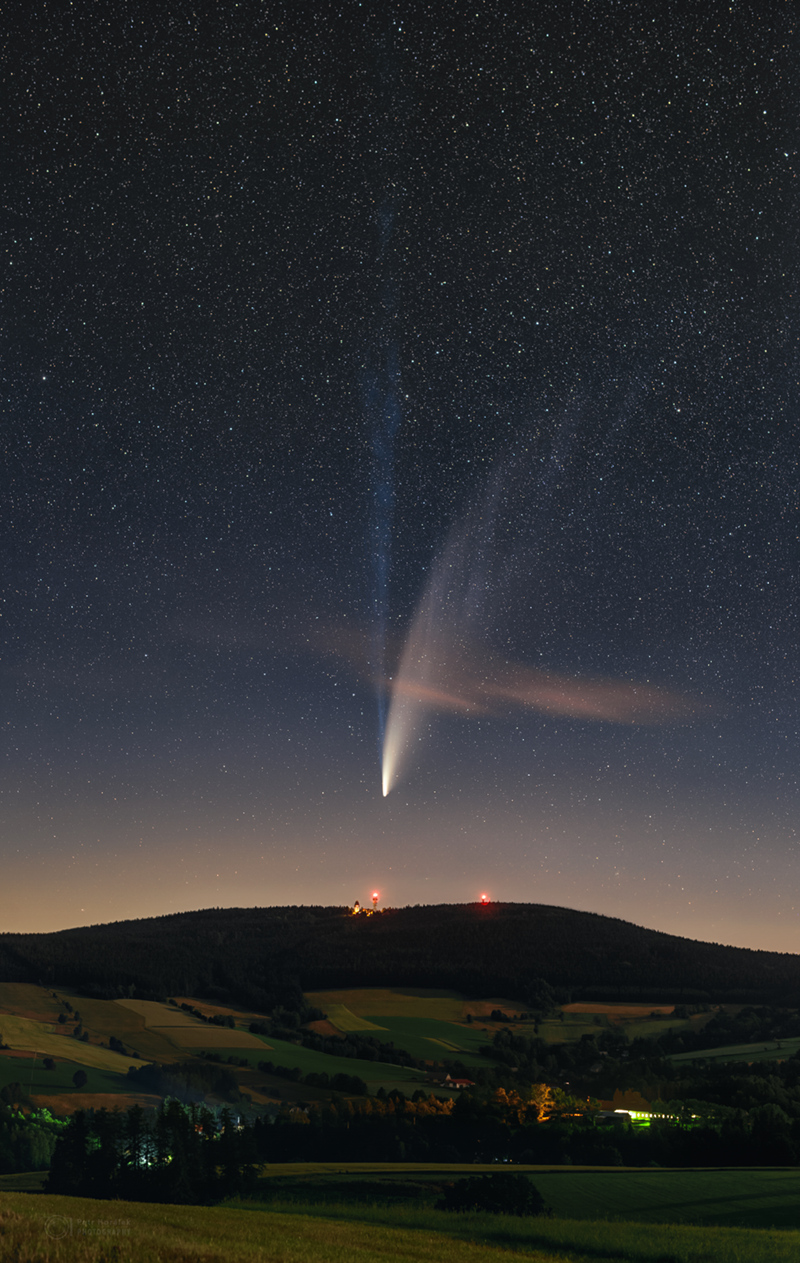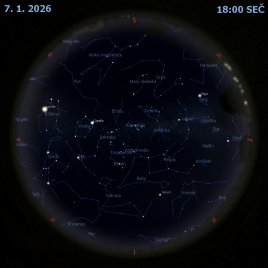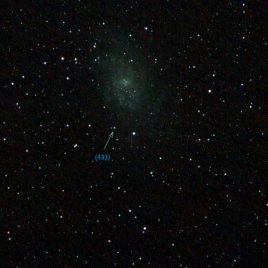Dlouhé ohony komety NEOWISE

Uznání a copyright: Petr Horálek
Kometa NEOWISE (C/2020 F3) nyní prolétá severní oblohou naší milé planety. Její dlouhé ohony se táhnou hloubkovým pohledem na oblohu nad Suchým vrchem v České republice. Kompozitní obraz pořízený v noci z 13. na 14. července se skládá z obyčejného snímku popředí a z expozic oblohy přes filtr vedenými za hvězdami a ukazuje podrobnosti kometárního ohonu, které pouhým okem nejsou vidět. Slabé struktury sahají více než 20 stupňů od jasné komy až k horní části snímku. Pouhým okem se dá snadno vidět široce zakřivený žlutavý prachový ohon, který odtlačuje tlak záření samotného slunečního světla. Ovšem slabší, modřejší ohon je od reflexivního kometárního prachu oddělený. Ten slabší ohon je ohon iontový a vzniká z iontů vytažených z komy magnetickým polem slunečního větru, které pak ve slunečním světle fluoreskují. Odlétající kometa NEOWISE stoupá na severní večerní obloze výš a 23. července bude nejblíže Zemi.
Seznam odkazů v popisu
- APOD: 2020-07-15 Kometa NEOWISE nad Švýcarskými Alpami
- Cnr.it: Comet Hale Bopp showing its two tails
- Astronom.cz: Comet in Morning Glare
- NASA: NASA’s Parker Solar Probe Spies Newly-Discovered Comet NEOWISE
- NASA: How to See Comet NEOWISE
NASA Official: Phillip Newman Specific rights apply. NASA Web Privacy Policy and Important Notices
A service of: ASD at NASA / GSFC & Michigan Tech. U.
Odkaz na originální APOD


